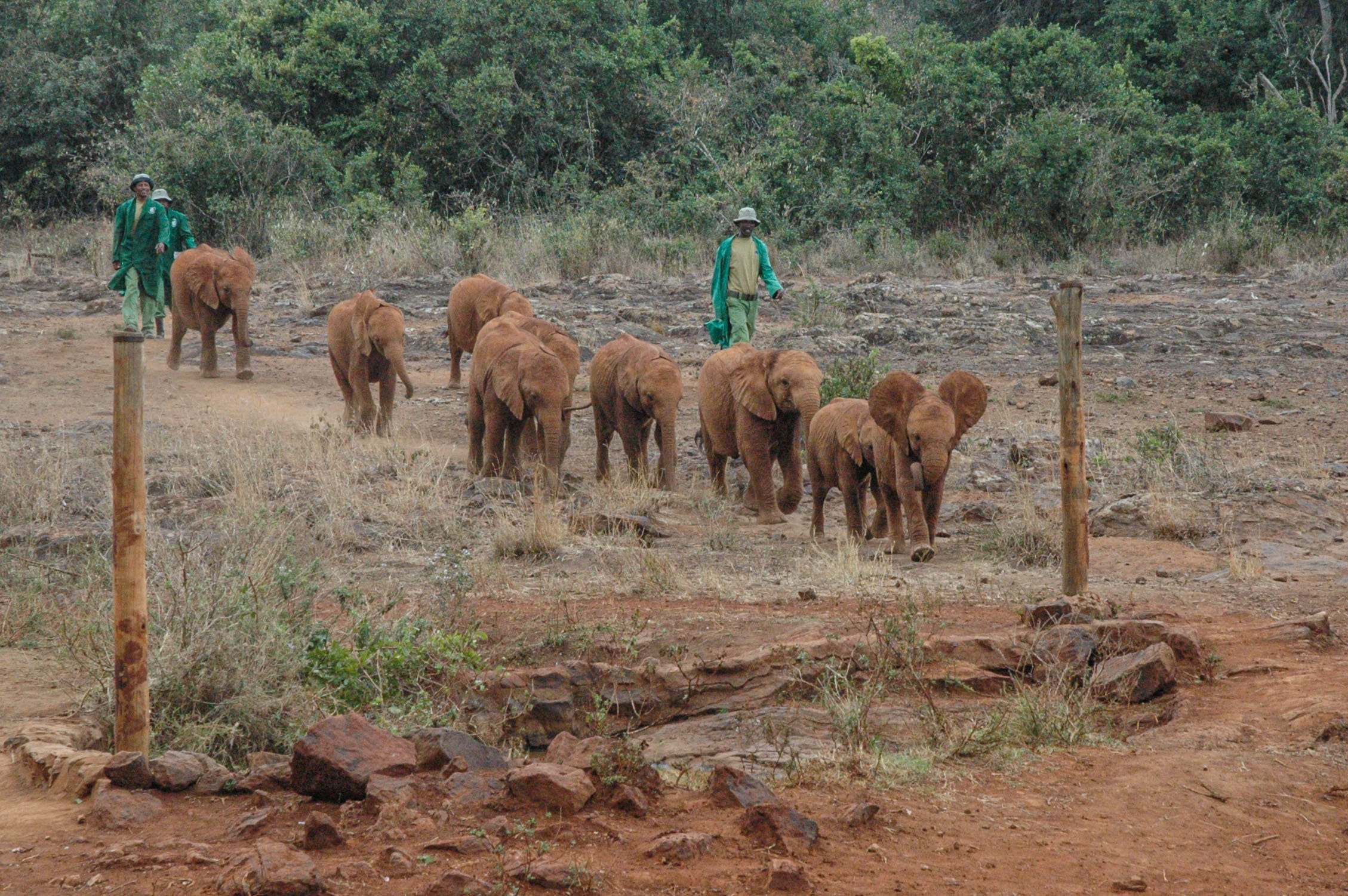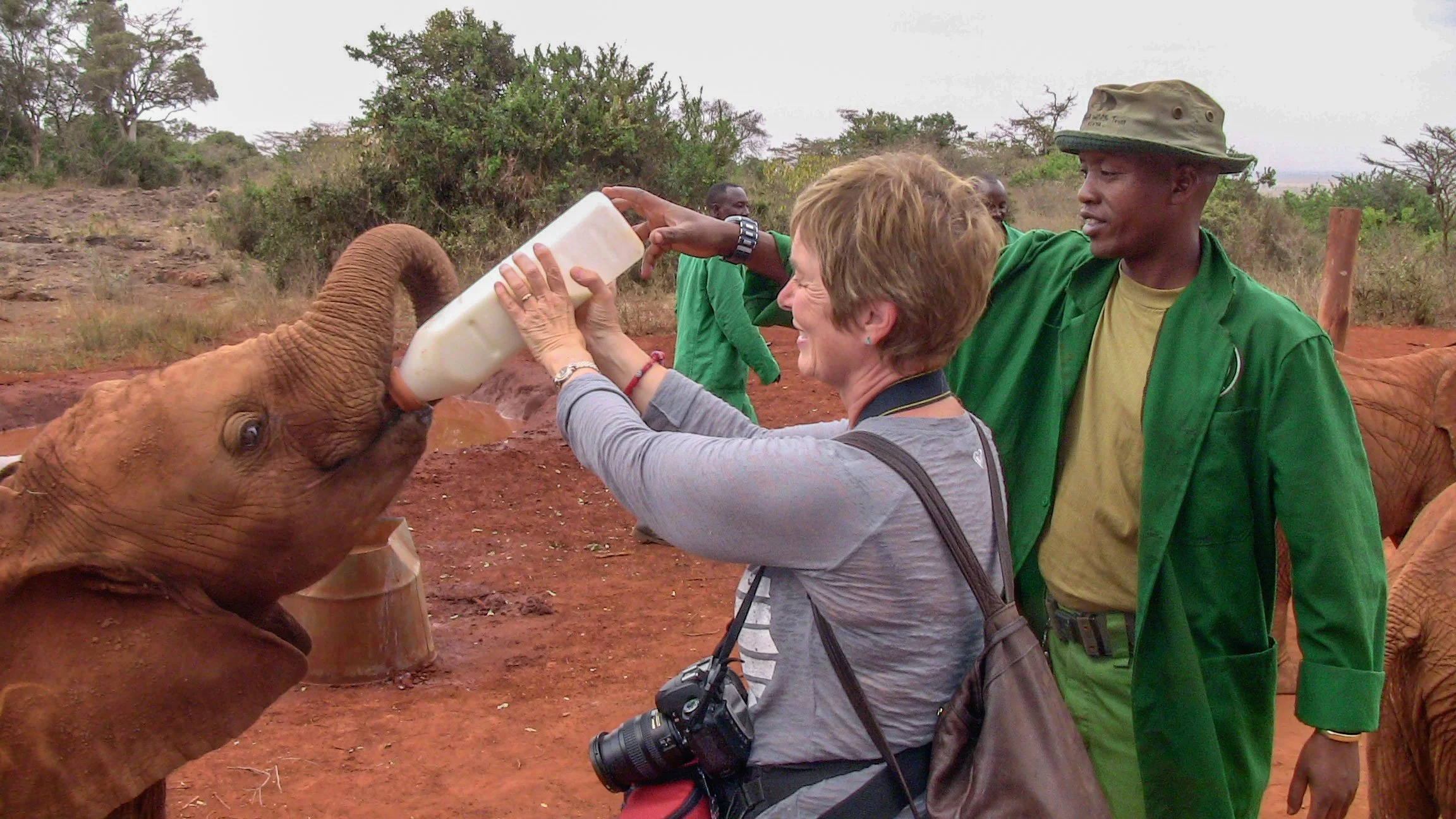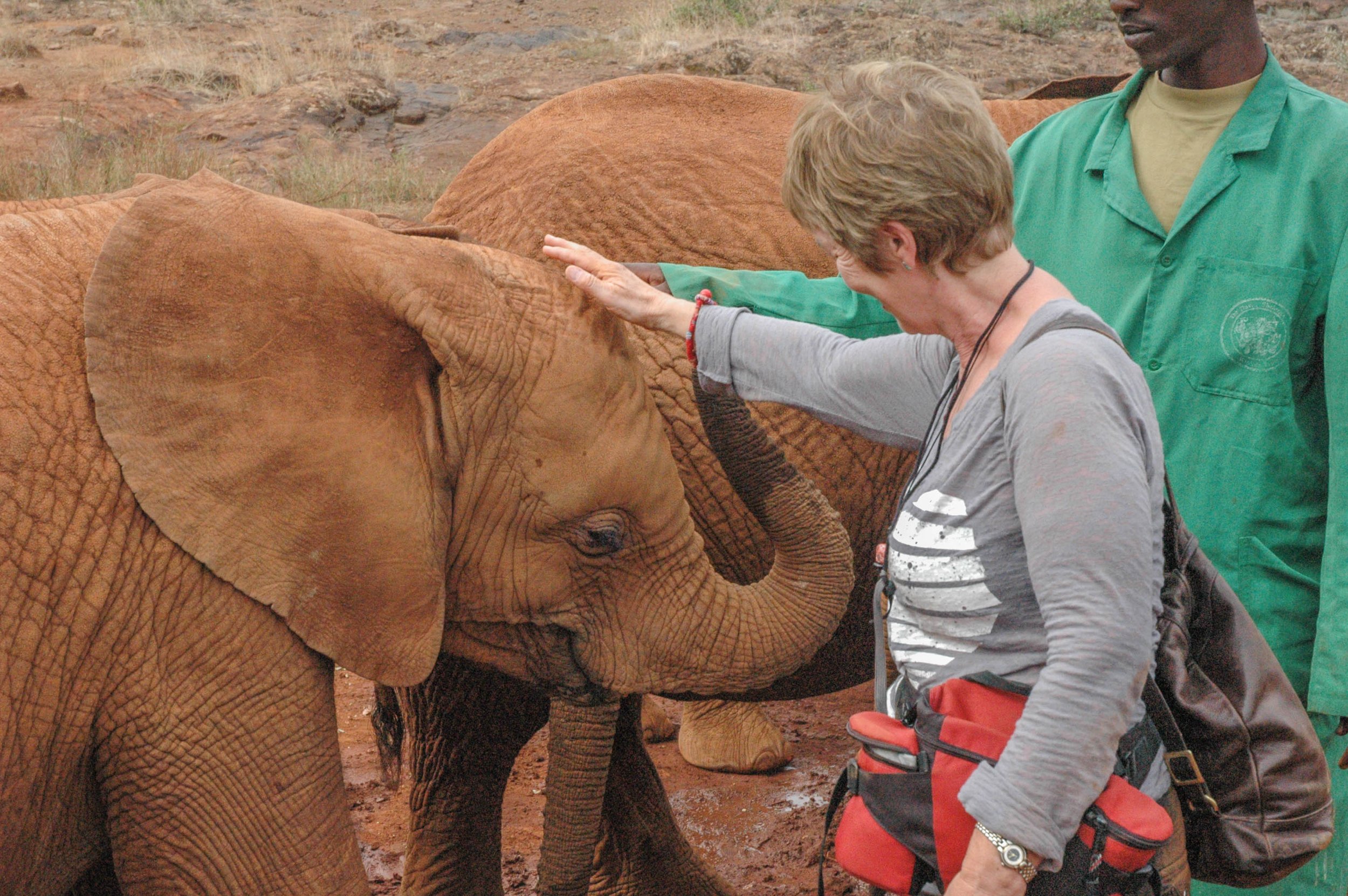A Wild Reunion
I had no idea what was in store for me on Day 1 of my inaugural trip to Kenya in 2010. Our first stop was the David Sheldrick Wildlife Sanctuary. They rescue and rehabilitate baby elephants orphaned due to human wildlife conflict, natural disasters or poaching. It takes 5-8 years for a young elephant to grow up and return to living wild. The process involves a dedicated team of keepers and staff, round the clock care and thousands of dollars. Adopting an elephant for $50 a year is one way to provide financial support. As part of our visit, we were invited to choose an elephant to adopt from the group of orphans in the nursery.
The orphanage is situated inside Nairobi’s National Park and is the first home for the youngest orphans. Edwin, the head keeper, explained that the babies were out in the park with their keepers when we arrived. They would return shortly for their 5:00 PM bottle feeding before retiring to the safety of their stockades for the night. He told us we could pet and feed the orphans, but it was important to be calm and stay standing. Within minutes a group of pint-sized elephants emerged from the forest. Trumpeting loudly, they raced towards a lineup of keepers holding large bottles of milk.
Our group stood back in amazement as the little elephants drained their bottles in seconds. Amos, one of the keepers, motioned to me to come forward to feed a second bottle to an orphan. I was in heaven. Pinch me, was this really happening?
** Note this policy has changed. Visitors must now stay behind a fence to watch the feeding.
Once their tummies were full the orphans mingled amongst us. Although babies, the offspring of the largest mammal on earth is still big! One orphan gave me a hip bump as she sidled by and knocked me right off my feet. For a moment I was dwarfed by a sea of elephant legs. A keeper rushed to help me up. “Who was that?” I asked a little breathless. “That was Tumaren” he replied. “Well, I guess she chose me. That’s who I’ll foster,” I replied.
In Dec. 2010 Tumaren graduated from the Nairobi nursery to the Ithumba Reintegration Unit in Tsavo East National Park.
As with all orphans, her reintegration journey unfolded gradually, but by the end of 2015, Tumaren was leading a completely wild life. She joined a small herd with her Nursery friends, including Olare, Melia, Kandecha, Naisula, Kitirua, Chemi Chemi, Kalama, and Kibo — and while her social network has expanded, Tumaren remains close with these friends to this day. (DSWT newsletter)
From time to time, I would read that Tumaren stopped by Ithumba with other ex-orphans to visit their human family. Elephants never forget. On October 23, 2023, a very pregnant Tumaren showed up at Ithumba.
It was after the ‘evening rush’ at the stockades, and most of the visiting ex-orphans and wild elephants had dissipated into the wilderness. Thus, Ithumba Head Keeper Benjamin was surprised to see a mum and newborn calf emerge from the dust and beeline for the stockades. He was even more surprised when he realised it was Tumaren, making the time-honoured pilgrimage ‘home’ to introduce her baby boy to the people who raised her!
My baby had a baby! They named Tumaren’s calf Tembo, which means ‘elephant’ in Swahili. This is a conservation success story of an elephant who got a second chance in life thanks to the care and commitment of the people at the DSWT.
Wait! There is more to this story. Stay tuned for Part 2 : Tembo’s Dramatic Rescue, next week.
Tumaren and Tembo - Photo Credit DSWT






